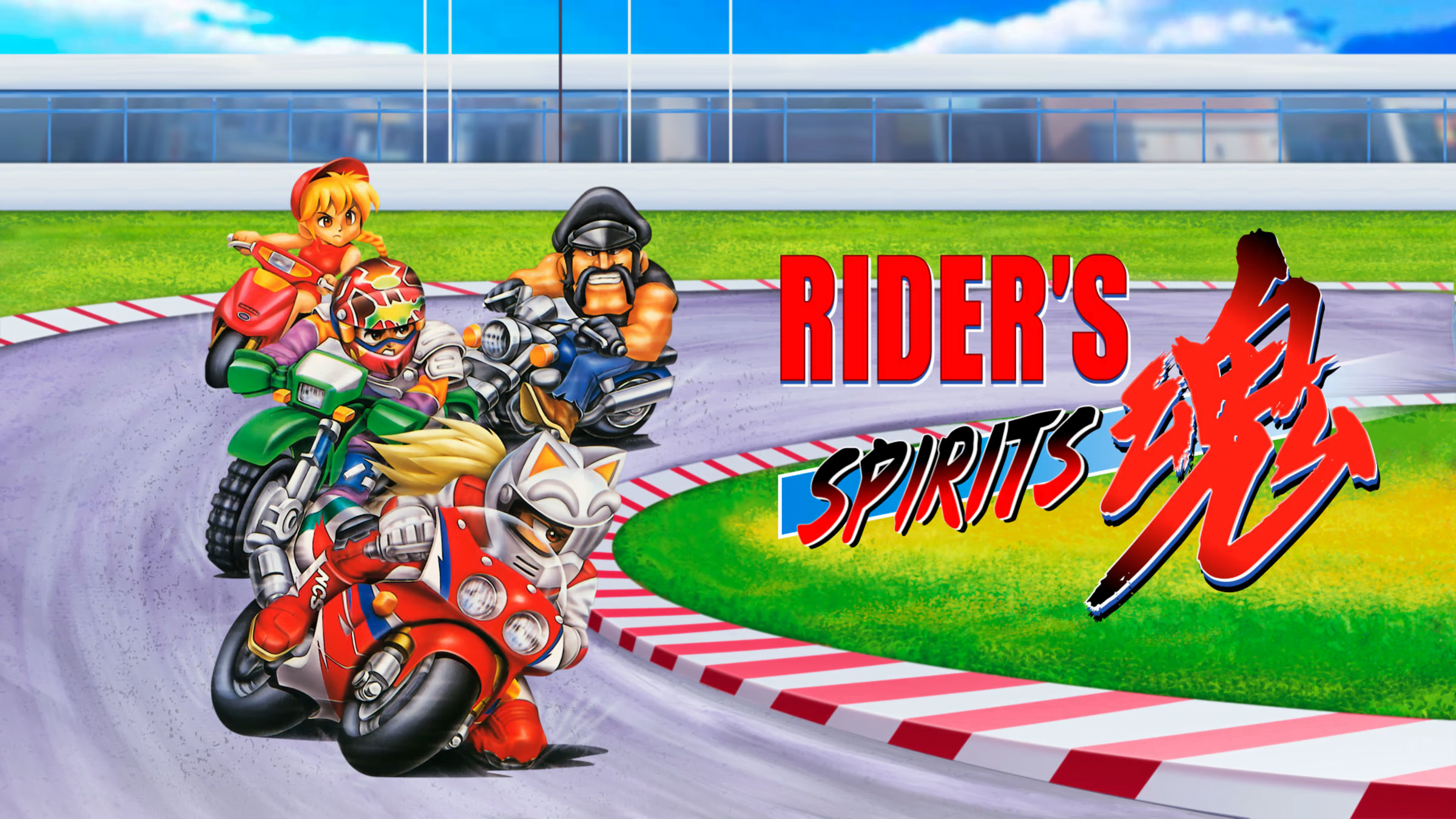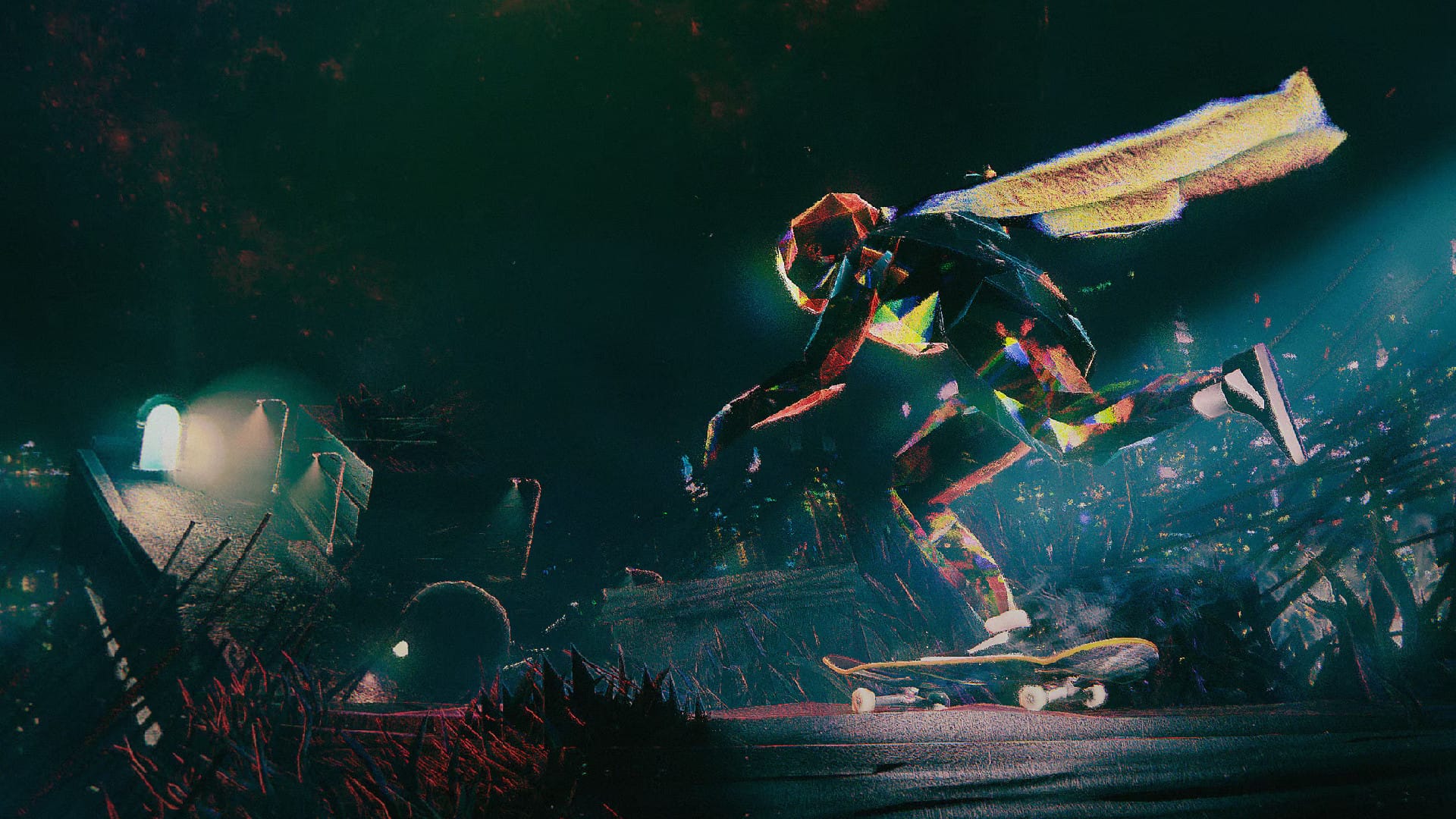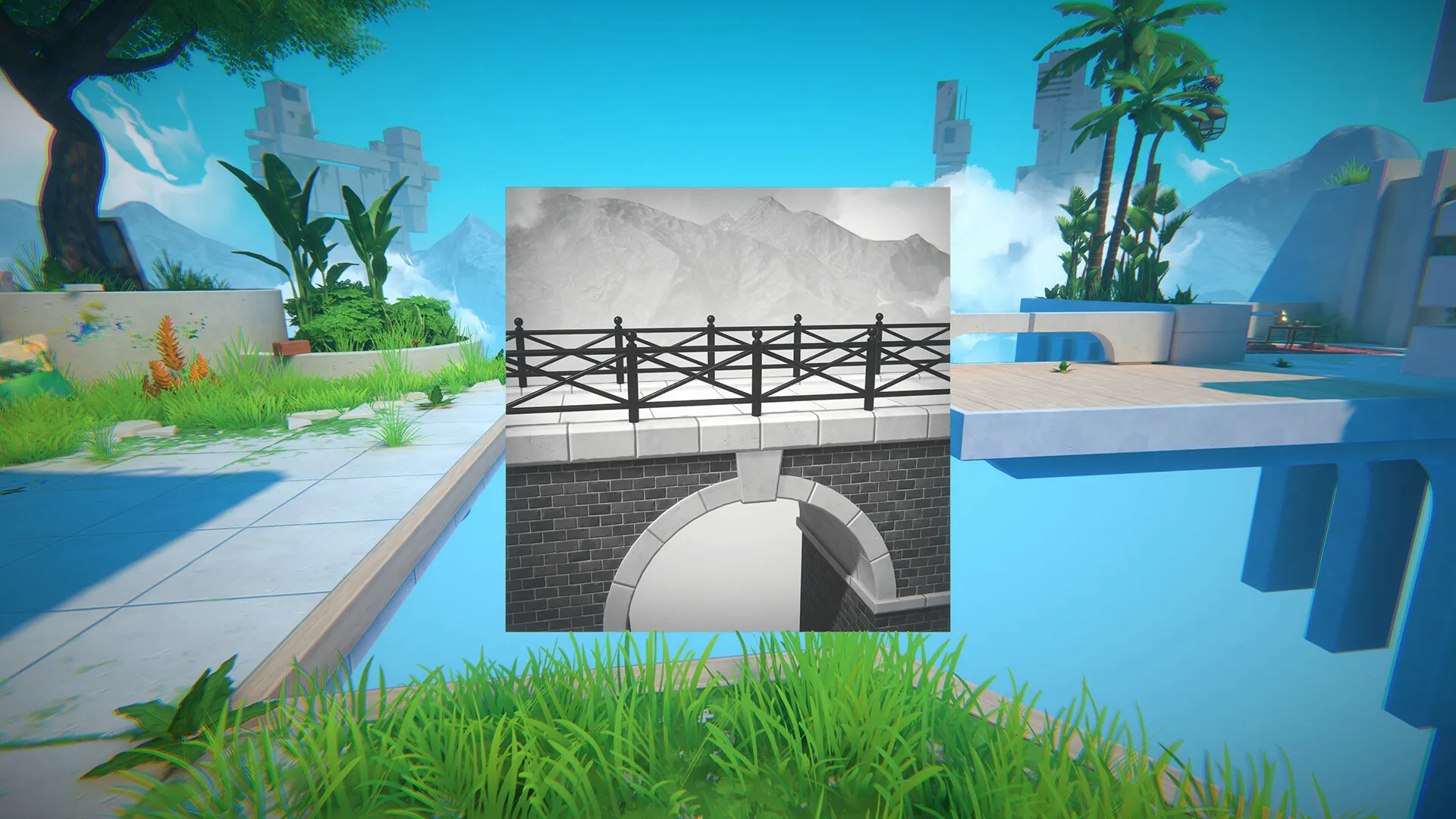It’s always an interesting experiment trying to figure out the logic for videogame releases. Knowing that companies usually do some market research before thinking of putting out a game, some decisions turn out to be baffling to those looking in from the outside. Such is the case of Ratalaika‘s re-release of Bike Daisuki! Hashiriya Kon, a previously Japan-only Super Nintendo bike racing game in the vein of the 16-bit kart racing craze and that happening on the Switch of all places, now under the name Rider’s Spirits.
But that bears some explanation. After all, if you, like me, have never heard of Rider’s Spirits up until this point, you’re likely asking your computer screen “what’s wrong with this game, Eduardo? Just get on with your silly review”. Well, thing is, Rider’s Spirits is a Super Mario Kart-like being released on the system one of the most popular entries in that series happens to also be the best-selling game for nearly a decade, so much so that more than likely you not only own a copy of it, but have also played it a lot.
Still, putting aside a caveat as big as the Grand Canyon, it’s hard not to overlook the fact that the game looks, feels, and mostly plays like a borderline clone of Nintendo’s excellent Super Nintendo release which sparked the trend of character-based racers during the 16 and 32-bit generations. While others have certainly done their best to try and differentiate themselves from Mario’s spin, like Crash Team Racing and even Diddy Kong Racing, Rider’s Spirits lacks a cast of as likable characters as the former two while still playing very similarly to its inspiration.
If, in fact, the game had been released on any other system where the competition doesn’t happen to be one of its flagship releases, it would’ve been fine, after all, some folks might not own a Switch nor a Super Nintendo and might want to get a kart fix every now and then. Such is not the case here. Even if you are one of the rare Switch users that doesn’t have Mario Kart 8 Deluxe, chances are that you have at least access to Nintendo Switch Online and have played Super Mario Kart. Or, ever the slighter odd, you haven’t partaken in either, you at least know what the red shell-tossin’, banana peelin’, snakin’ party racer is.
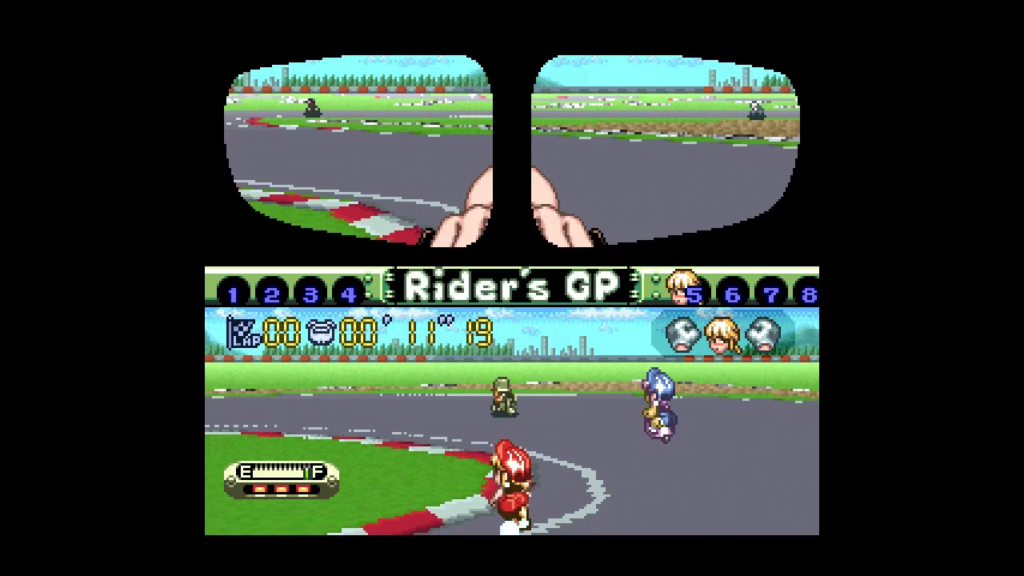
Then again, knowing that this needs to be an informative review about Rider’s Spirits, I’ll step back from being shocked with the gall that it is seeing a game like this grace the Switch and talk about what makes it something you have an inkling for playing. It features what could be called a “colorful” cast of characters that includes a leather-wearing biker gang member, a German stormtrooper helmet-toting similarly-placed motor clubber, and well, a handful of others that look pretty much the same.
Thankfully, these racers share the traits of those found in Mario Kart, as their stats vary and directly influence the way they control, for instance, much like Bowser, the aforementioned biker dude is a heavy set, but his top speed is, well, top notch, and so it goes. In terms of balance, Rider’s Spirits feels competitive enough, but since there’s no way other than local multiplayer to test your mettle against other people, you’ll have to make due with single player.
In that, there’s your usual assortment of modes, such as championship, time trial and single races, but among these is an endurance race that goes against the cartoony style of the game by offering more realistic issues such as fuel consumption and when to pit, much like professional racing, only without the rash those onesies tend to inflict on real drivers. All jokes aside, this mode is perhaps the most exciting out of the bunch, but that’s not saying much because of one of this game’s main issue.
The fact is that the tracks are just not very good in Rider’s Spirits, especially when compared with any of the Mario Kart entries. Taking away all the visual flair that those games have, their racing venues are incredibly well designed, offering opportunities for some clever driving and shortcutting, some of which are still being discovered to this day. In this game, though, all tracks feel samey lacking the oomph that made Mario’s first big side gig such a hit.
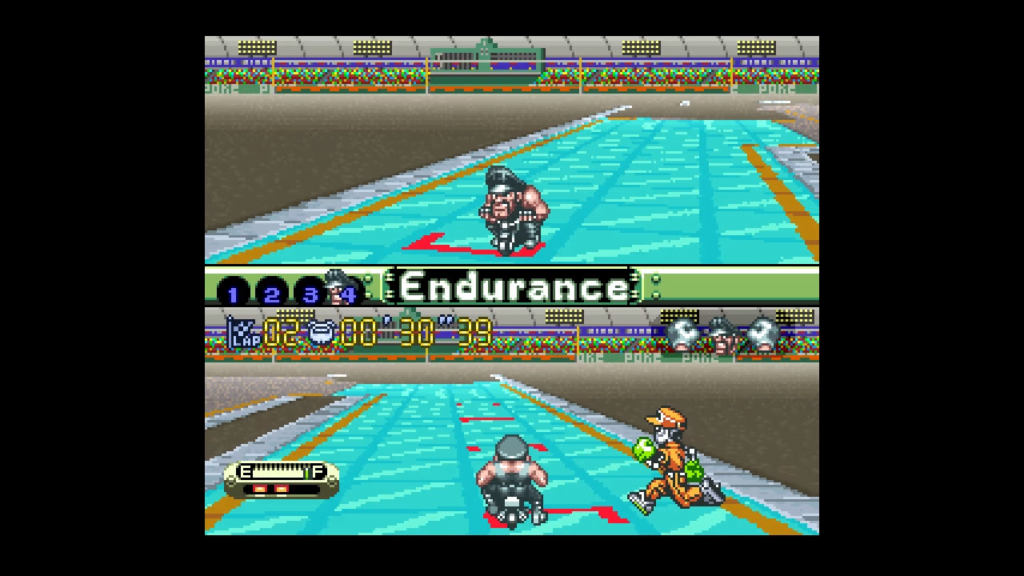
Presentation-wise, Rider’s Spirits has few highs and plenty of lows. The idea of adding a constant on-screen rear view mirror is great, considering all of the weapons that tend to come your way during races. The chibi nature of the racers helps give them some personality, but given that 90% of the cast is wearing face-obscuring helmets, there’s only so much a sprite designer can do to make them as likable as the game’s inspiration.
Aurally, there’s not much going for Rider’s Spirits as it features a very by-the-numbers pop rock set of songs that aren’t nearly as catchy as Koji Kondo’s work with Nintendo, and the sound effects mostly make the karts sound like lawn mowers racing on pavement. As for the rest of the audiovisuals, this is as 16-bit gaming as it can be, and technically, it does run as well as expected for what it is. In that, it’s surprisingly close to Nintendo’s own efforts, which is impressive.
Overall, if it weren’t for the multi-billion dollar elephant in the room, Rider’s Spirits would have fared much better. As things are, though, there are much more convenient and better alternatives out on Switch that overshadow this game in just about every department. In terms of historical significance, it follows the same round as Ratalaika’s previous releases, providing a chance for those looking to collect otherwise rare and obscure, but not necessarily great games. In the grand scheme of their catalog so far, Rider’s Spirits ranks somewhat lower than the rest of the pack, not quite reaching the podium.

